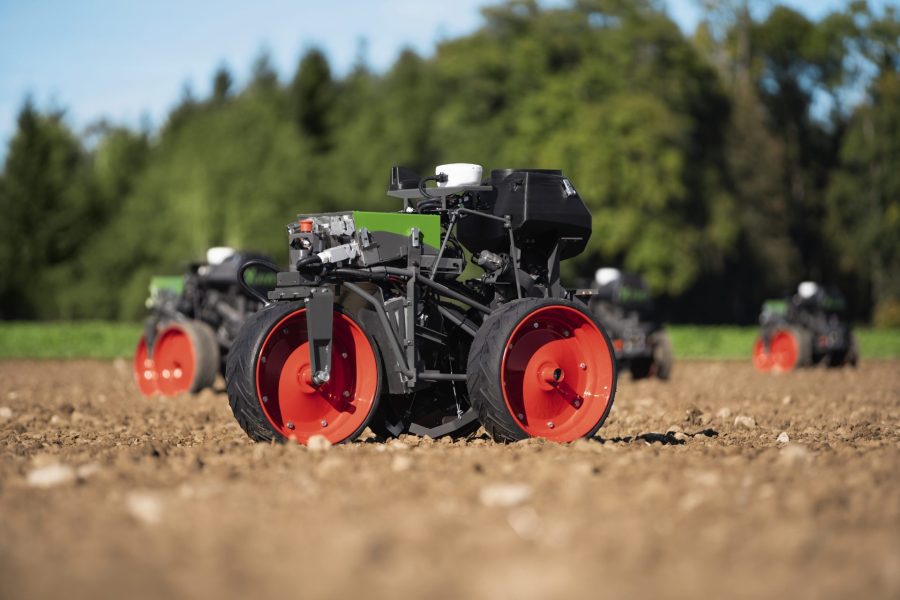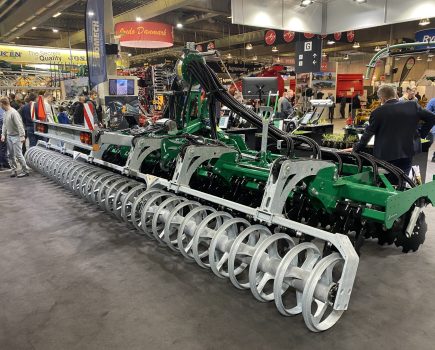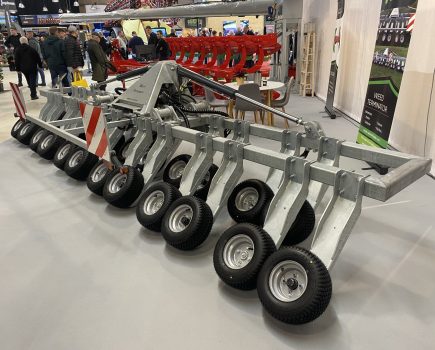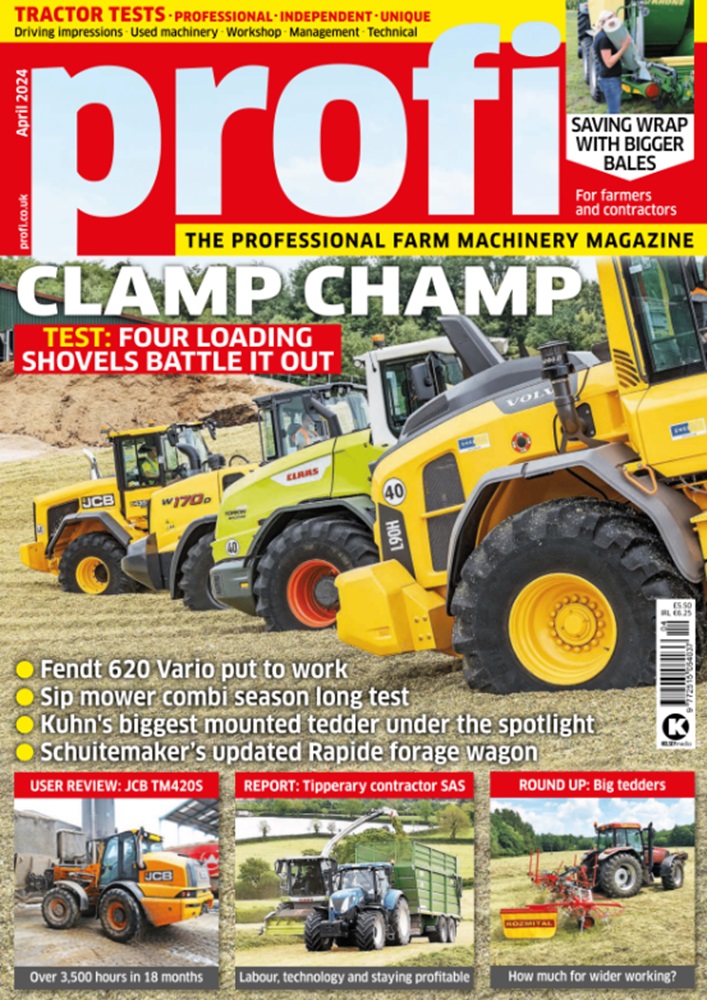The latest version of the Xaver field robot not only looks different to earlier models but features new seeding units and increased levels of technology.
Developed by fellow AGCO company Precision Planting, the electrically driven control system in the integrated vSet seeding unit deposits individual grains with centimetre-accuracy at a pre-defined distance in the row.
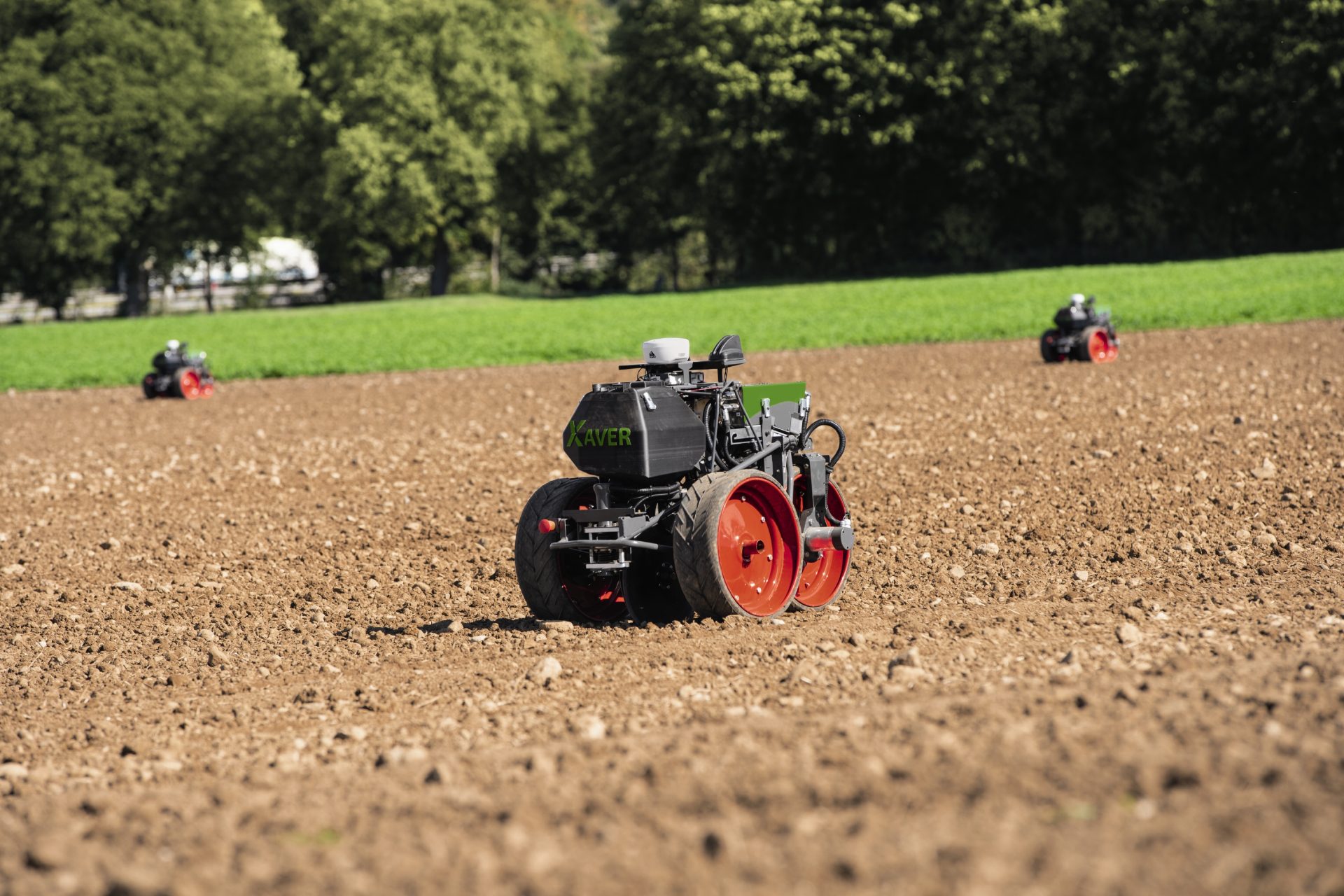
Seed is currently dropped into the furrow by a flexible firmer, but the plan is to install Precision Planting’s Smart Firmer in the future. Fitted with sensors measuring soil moisture, temperature, humus content and plant residues, this varies the seed depth based on local conditions.
The design switch from four to three wheels (rear wheel steering) on the Xaver is also new. The larger wheels increase the surface contact area, provide more ground clearance, more precise depth guidance and quicker headland turning. The last wheel acts as a press to gently compact the soil to the side and above the seed.
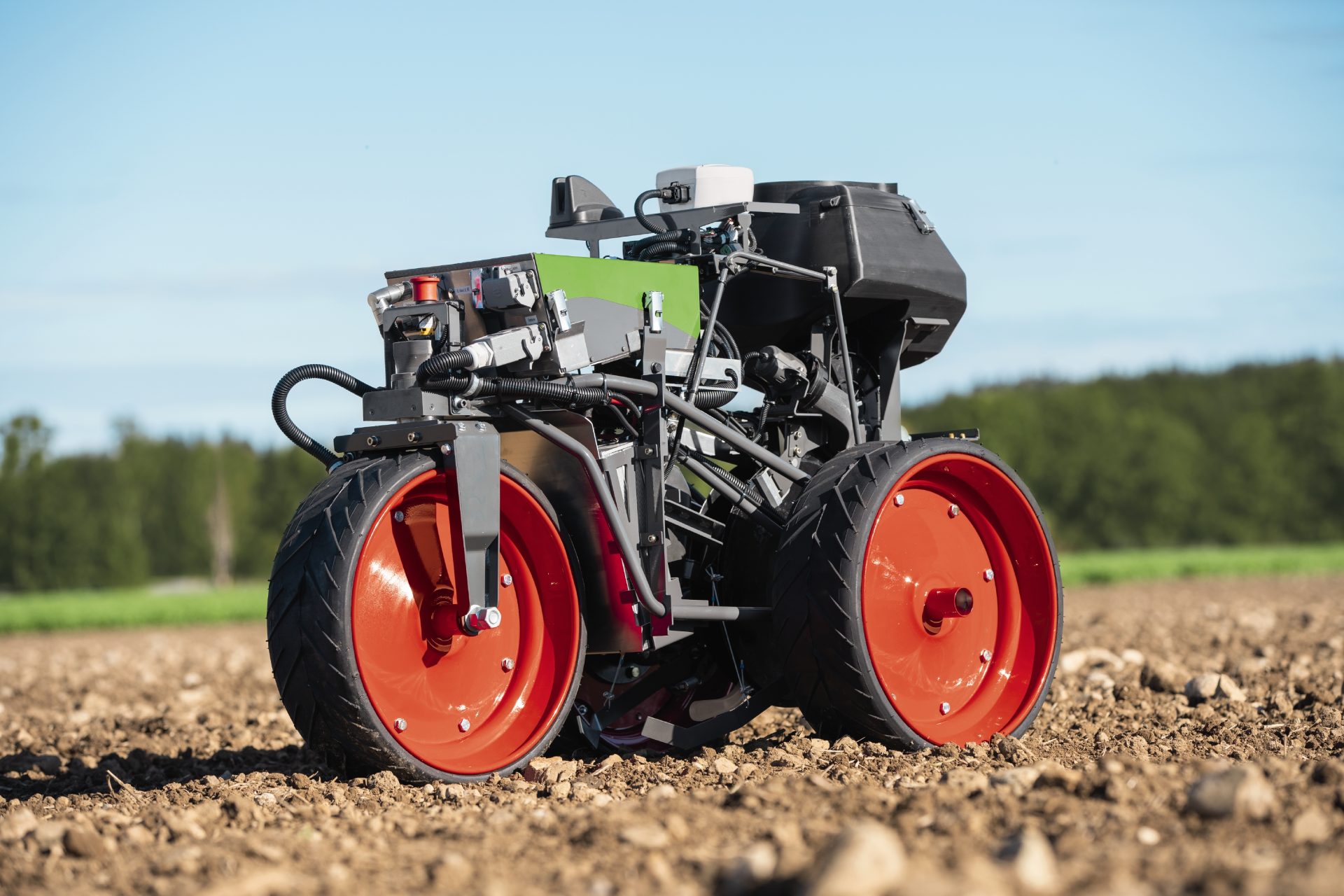
Wheel weights in the front wheels help to increase the coulter pressure when sowing in loamy soils. Fully ballasted, the weight of the 2.0m-long and roughly 150kg field robot increases to a maximum of 250kg.
Seed hopper capacity has been increased to 20 litres, which is said to be enough for around 0.5ha at 90,000 seeds/ha. The capacity of the lithium-ion battery has been increased to 2.6 kWh and the field robot can work for about 1.5 hours before returning to the base station for charging and Fendt reckons a swarm of six robot units can cover around 3ha/hr.

The latest generation is equipped with the VarioGuide guidance system, and the FendtONE platform allows field data information to be exchanged between tractor and robot as well as between robot and database.
“The Xaver maps all the useful crops in the field, and we can use this for all our follow-up work, such as plant protection, mechanical weed control and fertilisation, regardless of whether this is done by robots or tractors,” says Dr Benno Pichlmaier director global technology & innovation.
“The prerequisite for swarm technology is a reliable network coverage for communication. Going forward, we will use the imminent implementation of the digital strategy with a 5G network expansion in Germany and worldwide.”
Fendt’s research and advanced engineering department has been working on strategic future topics like swarm technology and robotics since 2017.

